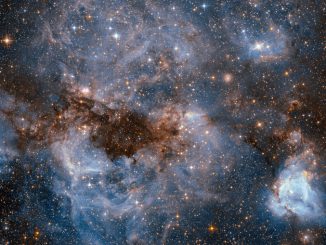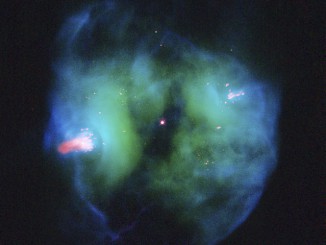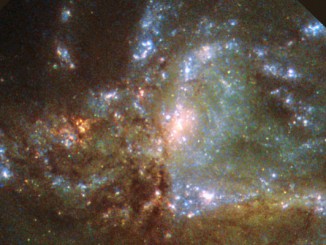
Hubble sees a ‘nuclear ring’ of star formation in galactic merger
While NGC 278 may look serene, it is anything but. The galaxy is currently undergoing an immense burst of star formation as revealed in this NASA/ESA Hubble Space Telescope image. However, NGC 278’s star formation is somewhat unusual: why is it only taking place within an inner ring some 6,500 light-years across and not extend to the galaxy’s outer edges?





